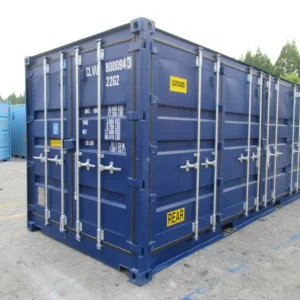Shipping container architecture is a modern and sustainable way to create eco-friendly buildings. By repurposing used shipping containers, architects and designers are able to reduce waste and create unique and innovative structures.
Durability of Shipping Containers
One of the key benefits of using shipping containers for building is their durability. Made to withstand the harsh conditions of long-distance travel, shipping containers are incredibly strong and can easily be stacked and modified to create various designs. This durability also means that shipping container buildings are resistant to fire, pests, and extreme weather conditions.
Cost-Effectiveness of Shipping Containers
In addition to their strength and durability, shipping containers are also a cost-effective building material. With an abundance of used shipping containers available, they are often more affordable than traditional building materials. This makes shipping container architecture an attractive option for those looking to build a sustainable and cost-efficient structure.
Sustainability of Repurposing Shipping Containers
Another advantage of shipping container architecture is its sustainability. By repurposing used shipping containers, architects are able to reduce the environmental impact of construction. Instead of letting the containers sit in a landfill or be melted down for scrap metal, they can be transformed into functional and stylish buildings.
Energy Efficiency of Shipping Container Buildings
Not only are shipping container buildings eco-friendly, but they also have the potential to be energy-efficient. With proper insulation and design, shipping container structures can be highly energy-efficient, reducing the need for heating and cooling systems. This can lead to lower energy costs and a smaller carbon footprint.
Flexibility in Design
Shipping container architecture also offers flexibility in design. Containers can be easily modified and combined to create a wide range of building types, from homes and offices to retail spaces and art installations. This flexibility allows for endless possibilities in terms of design and functionality.
Incorporating Sustainable Features
One of the most exciting aspects of shipping container architecture is the ability to incorporate sustainable features such as green roofs, solar panels, and rainwater harvesting systems. These features can further enhance the sustainability of shipping container buildings, making them even more eco-friendly.
Conclusion
Overall, shipping container architecture offers a modern and sustainable approach to building design. By repurposing used Shipping Container Homes, architects and designers are able to create unique and innovative structures that are not only durable and cost-effective but also environmentally friendly. Whether you are looking to build a home, office, or retail space, exploring eco-friendly buildings with shipping container architecture is a great way to reduce waste, lower costs, and create a sustainable structure that is both functional and stylish.